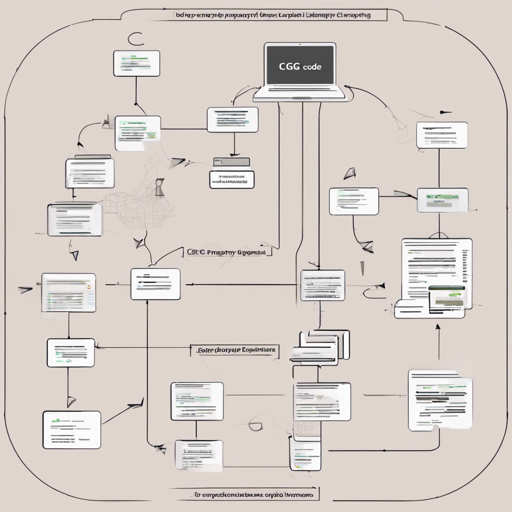Welcome to our guide on using the Code Property Graph (CPG) library! This powerful tool extracts a code property graph from source code, offering advanced functionalities through multiple analysis passes. Whether you’re diving into CC++, Java, or even trying your hand at Golang, Python, or TypeScript, this library is your ally. Let’s explore how you can set it up, visualize your graphs, and troubleshoot common issues!
What is a Code Property Graph?
A Code Property Graph (CPG) serves as a visual and structured representation of source code, similar to a city map. Just like a city map has streets (edges) and intersections (nodes) marked with information about what can be found there (properties), a CPG allows each piece of code to be represented with key-value pairs, making it searchable and analyzable. This means you can use graph query languages like Cypher and SQL to sift through your code!
Getting Started
Installation and Setup
- To build the project from source, generate a
gradle.propertiesfile in the cpg-project directory. - You can find a sample
gradle.properties.exapmlefile to copy for your use. - Alternatively, use the
configure_frontends.shscript to set your programming languages easily.
Visualizing Your Graph
To gain insights from your CPG, you can utilize the cpg-neo4j subproject. This will create a Neo4j graph database where you can visually explore your code’s structure using the Neo4j Browser.
Using the CPG Library
You can integrate the CPG into your project easily:
dependencies {
val cpgVersion = "8.0.0"
implementation("de.fraunhofer.aisec:cpg:$cpgVersion")
}
Advanced Configuration
The library’s behavior can be customized using two main configurations: TranslationConfiguration and InferenceConfiguration. These enable you to set which languages and aspects of your code should be analyzed.
val inferenceConfig = InferenceConfiguration.builder()
.guessCastExpression(true)
.inferRecords(true)
.inferDfgForUnresolvedSymbols(true)
.build()
val translationConfig = TranslationConfiguration.builder()
.inferenceConfiguration(inferenceConfig)
.build()
Troubleshooting Common Issues
If you encounter issues while using the CPG library, here are some tips to help you resolve them:
- Make sure your
gradle.propertiesfile is correctly set up to include the desired programming languages. Use the provided example file as a reference. - If you notice parsing issues, ensure that the source code is syntactically correct, particularly for LLVM IR, which is sensitive to errors.
- For persistent issues, consult the project’s GitHub page and documentation to identify any common problems or updates.
For more insights, updates, or to collaborate on AI development projects, stay connected with fxis.ai.
Conclusion
At fxis.ai, we believe that such advancements are crucial for the future of AI, as they enable more comprehensive and effective solutions. Our team is continually exploring new methodologies to push the envelope in artificial intelligence, ensuring that our clients benefit from the latest technological innovations.

